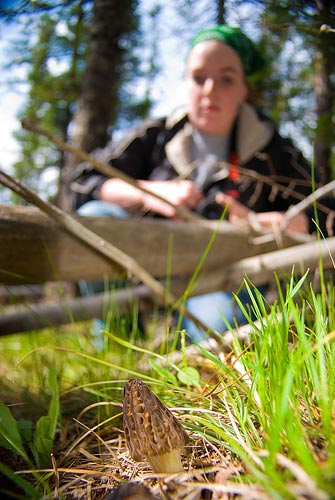By Marcelene Sutter

Foraging for food has become a widespread facet of foodie culture over the past few years, with classes and online guides giving rise to unprecedented numbers of forest visitors in search of fresh mushrooms. Nationwide, chefs and foodies alike seek the unique taste of the wild mushroom, inspiring them to take a trip to their local forests and raising concerns among park rangers.
Mushroom foraging is becoming increasingly trendy in California, where it is illegal in most state and national parks, Salt Point State Park being a notable exception. Although this type of collecting is legal in the park, the use of rakes and shovels to hunt for fungi is not, and visitors who illegally use these tools disturb the forest floor. Visitors have been making their presence known in other ways too; in an interview with NPR, Ranger Todd Farcau describes the trash left behind by fungi-seeking tourists as looking “like a rock festival has passed through.” Although strict regulations are in place in the park, they are not always followed by visitors, who flock to the forest in foraging tour groups that can cost up to $90 per person.

While eating fresh foods is a healthful and delicious initiative, Salt Point is taking a hit because it is one of the few parks that allows this activity. Visitors converge on the forest, seeking the delicious fungi and often disobey the five pound per day limit, exacerbating the problem. Regular Salt Point mushroom hunting tour leader Patrick Hamilton feels that the solution to the problem is not to prohibit mushroom gathering all together, but rather to open more areas where foraging is allowed, to ease some of the burden on Salt Point State Park. In his words, “If they would just open up all the parks to hunting, you wouldn’t even notice us.”